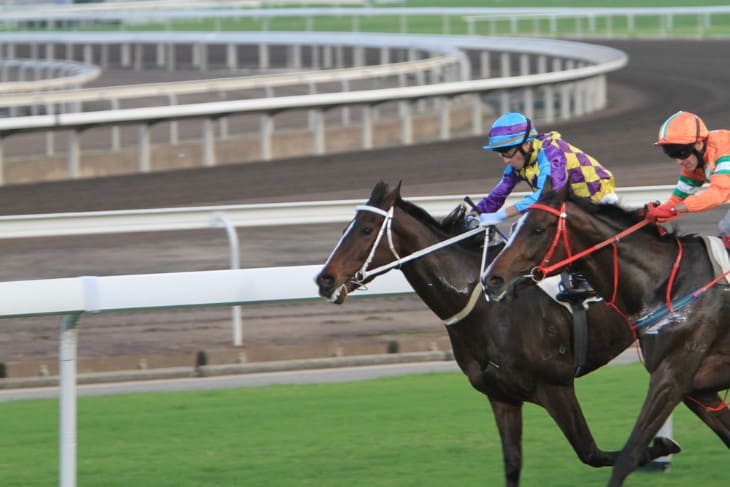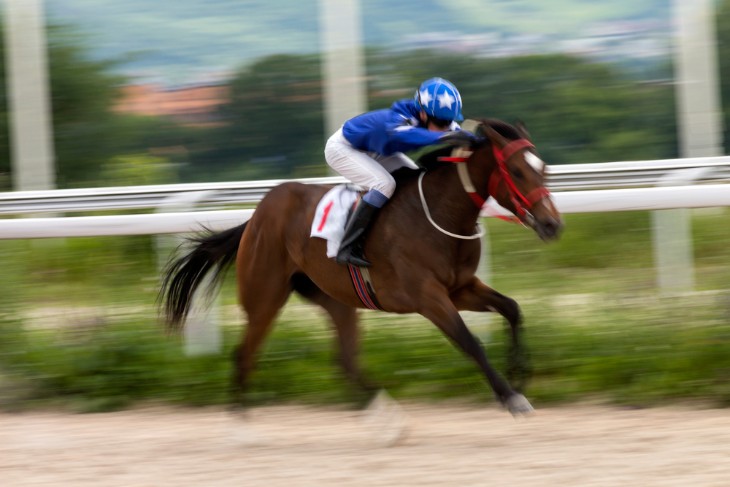- Key Principles in Weight Allocation
- Notable Weight-for-Age Races Worldwide
- Training Strategies for Different Age Groups
- Impact of Age on Equine Performance
- Weight-for-Age Scale: A Detailed Breakdown
- Jockey Strategies in Weight-for-Age Competitions
- The Role of Breeders and Owners
- Equine Health and Nutrition for Optimal Performance
- Conclusion
Weight-for-age racing is a specialised form of horse racing where horses carry different weights based on their age. This system aims to level the playing field, acknowledging that younger horses are typically at a physical disadvantage compared to their older counterparts. In these races, the weight a horse carries is determined by a scale that considers its age, gender, and the time of year. The primary objective is to ensure that each horse competes fairly, irrespective of its maturity level.
The concept of weight-for-age racing is deeply rooted in the understanding of equine development. As horses age, they develop muscle mass, stamina, and racing acumen, which can give them an advantage over younger, less experienced horses. By adjusting the weights carried, race organisers aim to mitigate these natural disparities. This adjustment enables a more equitable competition, allowing horses of various ages to compete on a more even basis.
The origins of weight-for-age races trace back to the 18th century, with the development of the thoroughbred racing industry in Britain. The system was formalised in the 19th century by Admiral Rous, a prominent figure in horse racing. He introduced a set of scales that became the cornerstone for modern weight-for-age races. These scales were meticulously crafted based on comprehensive observations and data collected over years of horse racing.
Over time, these scales have undergone modifications to better reflect the evolving understanding of horse physiology and training practices. Historically, weight-for-age races were predominantly the domain of elite racing circles. However, they have since become a staple in horse racing globally, celebrated for their unique blend of strategy, skill, and equine capability. These races not only test the agility and speed of the horses but also the skill and strategy of the trainers and jockeys involved.
Key Principles in Weight Allocation
In Weight-for-Age Races, the allocation of weight is a critical factor that significantly influences the race's outcome. The weight a horse carries is meticulously calculated based on several criteria:
- Age of the Horse: Younger horses, typically underdeveloped in comparison to their older counterparts, are assigned lesser weights.
- Time of Year: Adjustments are made according to the racing season, considering the horses' physical condition at different times of the year.
- Gender: Mares often receive weight allowances to compete equitably with male horses.
This weight allocation system ensures that the inherent physical disparities due to age or gender are balanced, allowing for a fairer competition. The skill in managing and understanding these principles lies at the heart of successful participation in these races. It requires a deep understanding of equine physiology and an awareness of each horse's unique capabilities and development stage.
Notable Weight-for-Age Races Worldwide
Around the globe, Weight-for-Age Races are celebrated events, drawing attention from racing enthusiasts and professionals alike. Some of the world's most prestigious races under this category include:
- The Prix de l'Arc de Triomphe in France: Known for its rich history and high stakes.
- The Cox Plate in Australia: A race that tests the endurance and speed of the competing horses.
- The Breeders' Cup Classic in the USA: A race that showcases top international equine talent.
These races not only highlight the agility and strength of the horses but also the strategic planning and expertise of the trainers and jockeys. Each event has its unique characteristics and challenges, making them pivotal in the world of horse racing. They serve as benchmarks for equine performance and are instrumental in shaping the standards and expectations in the sport.

Training Strategies for Different Age Groups
When preparing horses for Weight-for-Age Races, training strategies vary significantly across different age groups. Younger horses, often inexperienced and physically immature, require a more cautious and nurturing approach. The focus is on building stamina and muscle mass gradually, alongside honing racing skills. For these younger contenders, trainers typically emphasise foundational training that develops both physical and mental resilience required for racing.
In contrast, training older horses involves maintaining their peak physical condition and capitalising on their racing experience. These horses have already developed the necessary muscle and stamina, so the training is more about refinement and strategy. It's about keeping them in top racing form and mentally sharp for the competitive environment they will face. The key is to balance rigorous training with adequate rest and recovery, ensuring that the horse remains at its best for race day.
Impact of Age on Equine Performance
The impact of age on equine performance in Weight-for-Age Races is a critical aspect to consider. Generally, horses reach their peak racing performance between the ages of three and five. During this period, they exhibit optimal strength, speed, and stamina. However, this peak is not uniform for all horses; individual differences in development and training can significantly influence performance.
As horses age beyond their prime, there can be a noticeable decline in their racing capabilities. This decline is often gradual and can be mitigated through specialised training and care. However, it's essential to recognise the natural limits of performance as horses age. Older horses may not match the sheer physical prowess of their younger counterparts, but they often compensate with experience and strategic racing acumen. This complex interplay of physical ability and experience adds a fascinating dimension to Weight-for-Age Races, making them both challenging and intriguing.
Weight-for-Age Scale: A Detailed Breakdown
The Weight-for-Age Scale is the cornerstone of Weight-for-Age Races, providing a structured system to determine the weights horses carry in races. This scale is carefully calibrated and includes several factors:
- Age: Horses of different ages have distinct weight allocations. For example:
- Two-year-olds typically carry less weight than older horses.
- The weight incrementally increases as horses grow older, up to a certain age.
- Distance of the Race: Longer races may have different weight allocations compared to shorter sprints.
- Time of the Year: Seasonal variations are considered, reflecting the horse's physical development through the year.
This scale is crucial in maintaining fairness and competitiveness in races. It ensures that no single horse has an undue advantage purely based on age or maturity. The precision of this scale is a testament to the intricate understanding of equine development and racing dynamics.
Jockey Strategies in Weight-for-Age Competitions
In Weight-for-Age Races, the role of the jockey is just as crucial as the physical condition of the horse. Jockeys must employ strategic manoeuvres and techniques tailored to each race and horse. The weight a jockey carries, in addition to the horse's allocated weight, is a critical factor. Jockeys must often maintain a specific body weight to align with the race requirements.
Jockeys also need to understand the unique characteristics of each horse they ride - their strengths, weaknesses, and behavioural tendencies. This knowledge allows them to make split-second decisions during the race, maximising their horse's strengths and mitigating any weaknesses. Effective communication and a strong bond between the horse and jockey can significantly influence the race's outcome. The jockey's experience and skill in navigating the race track, managing pace, and timing their push for the finish line are instrumental in the success of their rides in these highly competitive races.

The Role of Breeders and Owners
In the world of Weight-for-Age Races, breeders and owners play pivotal roles. Breeders are responsible for producing high-calibre horses capable of excelling in these demanding competitions. They must have an in-depth understanding of equine genetics, ensuring that the horses they breed possess the necessary attributes - speed, stamina, and temperament - to compete at the highest levels. Selecting the right sire and dam is a meticulous process, often based on detailed records of lineage, performance, and physical traits.
Owners, on the other hand, must make strategic decisions regarding the training and racing of their horses. This includes selecting the right trainers and managing the horse's racing career. Owners often collaborate closely with trainers to devise race strategies and schedules that align with the horse's development and readiness. Their investment in the horse's wellbeing and training is crucial to its success in Weight-for-Age Races.
Equine Health and Nutrition for Optimal Performance
Maintaining optimal health and nutrition is fundamental for horses competing in Weight-for-Age Races. A horse's diet and health regime are meticulously planned to enhance performance, which includes:
- Balanced Nutrition: A diet rich in essential nutrients is crucial. This typically involves:
- High-quality forage for digestive health.
- Grains and concentrates for energy.
- Supplements to address specific nutritional needs.
- Regular Health Check-ups: Keeping track of the horse's health includes:
- Routine veterinary exams to monitor fitness and identify any health issues.
- Dental care to ensure efficient feed utilisation.
- Hoof care, crucial for mobility and performance.
Additionally, rest and recovery play significant roles in a horse's routine. Adequate rest periods help in muscle recovery and prevent injuries. Mental health is also a consideration, with efforts made to ensure that horses are not over-stressed or anxious. This comprehensive approach to health and nutrition is essential for horses to perform at their best in the demanding environment of Weight-for-Age Races.
Conclusion
As we look to the future of Weight-for-Age Races, several key points emerge:
- Global Appeal: These races will continue to attract international attention, uniting racing enthusiasts worldwide.
- Technological Integration: Advancements in technology will further refine race monitoring and horse training.
- Equine Welfare: Increased focus on horse health and wellbeing will remain paramount.
Competitive Strategies: Innovations in training and racing strategies will evolve, driven by ongoing research and development.
For more information:








